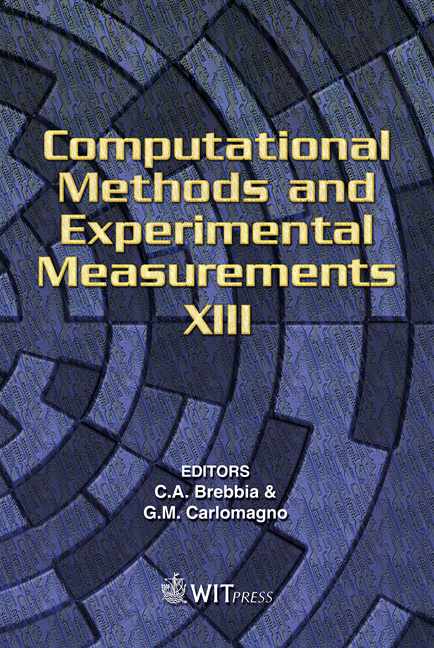Numerical Analysis Of Mixed Convection In Air In An Inclined Channel With A Moving Plate
Price
Free (open access)
Transaction
Volume
46
Pages
13
Published
2007
Size
939 kb
Paper DOI
10.2495/CMEM070421
Copyright
WIT Press
Author(s)
A. Andreozzi, N. Bianco, G. Lacasa & V. Naso
Abstract
A numerical investigation ofmixed convection in air due to the interaction between a buoyancy flow and a moving plate induced flow in an inclined channel is presented. The moving plate has a constant velocity and is unheated whereas the other channel wall is stationary and heated at uniform heat flux. The numerical analysis is obtained by means of the commercial Fluent code. The effects of the inclination angle, channel spacing, heat flux and moving plate velocity are investigated and results in terms of the heated channel wall and moving plate temperatures are given. Keywords: mixed convection, numerical analysis, inclined channel, moving plate. 1 Introduction Mixed convection due to moving surfaces is very important in a wide variety of materials processing systems, such as soldering, welding, extrusion of plastics and other polymeric materials, hot rolling, cooling and/or drying of paper and textiles, Chemical Vapor Deposition (CVD), composite materials manufacturing, as reviewed in [1–4] . Mixed convection as a result of buoyancy and motion of one of the channel walls has received little research attention and few guidelines are available for choosing the best performing channel configuration. A study on this topic is presented in [5], where the conjugate mixed convection and conduction heat transfer due to a continuous moving plate in a parallel channel flow was numerically investigated. Results showed that the effect of thermal buoyancy was stronger when the plate moved vertically than when it moved horizontally. The plate velocity affected the overall heat transfer significantly.
Keywords
mixed convection, numerical analysis, inclined channel, moving plate.





